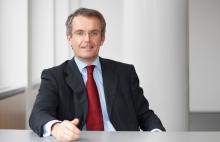The Vision 2020 strategy document, presented during the recent Capital Markets Day 2018 in Bergamo, Italy, says the free cash flow generation pledge reflects the German global building materials giant’s proven focus on operational leadership and a strong asset base.
The forecasted improvement in free cash flow is expected to be driven by further efficiency gains, potential market upsides in the current business cycle, disciplined capex spending and a further reduction in financial costs.
Following the significant growth over the past two years led by the successful
The global sector powerhouse intends to continue its progressive dividend strategy with a target pay-out ratio of around 40%. In parallel the company plans to reduce its leverage to below 2.0x and/or net debt to below €7 billion, paving the way to achieve a solid BBB/Baa2 rating.
In addition, HeidelbergCement plans to limit its net growth capex in the three-year period to a maximum of €1 billion by active portfolio management and at the same time reduce complexity and risks.
Proceeds from disposals in a range of €1 billion to €1.5 billion are planned to be used to finance selective growth investments between €1.5 billion and €2 billion. Further available cash may be allocated to additional deleveraging or higher returns to shareholder in the form of increased dividends or share buy-backs.
“We have grown the company with the successful integration of Italcementi and increased shareholder returns by raising our dividend to new record levels,” says DrBernd Scheifele, chairman of the Management Board.
“Our successful business model is based on the most advanced vertical integration, a simple structure focused on three core business lines and a de-centralised, lean organisation with strong local teams. As such, we have a compelling strategy in place which clearly differentiates us from our competitors and we remain the industry leader in business excellence and cost efficiency.
“HeidelbergCement is well positioned to capitalise on its strengths in the current business cycle. Over the next three years, we intend to significantly increase our free cash flow with the clear commitment to building shareholder value.”
Dr Lorenz Näger, chief financial officer, added: “We have strong cash generation potential not only from operations but also from financial cost reductions and disciplined capex management. We intend to continue with our progressive dividend strategy based on affordability and sustainability, deleverage our balance sheet and optimise our asset portfolio.”
HeidelbergCement will focus on three levers to further increase free cash flow: continuous efficiency improvements, active portfolio management with a disciplined capex approach and reduction of financial costs.
Based on its strong track record with respect to efficiency improvements, HeidelbergCement says it strives to continue to be the pioneer in the sector in realising further potentials.
Additional focus in the next years will be on the implementation of digital platforms in order to drive savings of in total more than €200 million in operations, maintenance, logistics and purchasing.
On top of that, HeidelbergCement expects to benefit from market improvements as core markets in Southern and Eastern Europe as well as in emerging countries enter the recovery and expansion phase of the current economic cycle. In total, the company assumes an organic EBITDA growth of around 5% per year over the three-year period.
HeidelbergCement intends also intends to further improve its asset base by active portfolio management. On the one hand the company follows a selective M&A strategy to strengthen the business in existing geographies, for example by increasing vertical integration. On the other hand it targets to reduce complexity and risk by disposing of non-core businesses, market positions with high risks or limited growth potential and idle assets.





